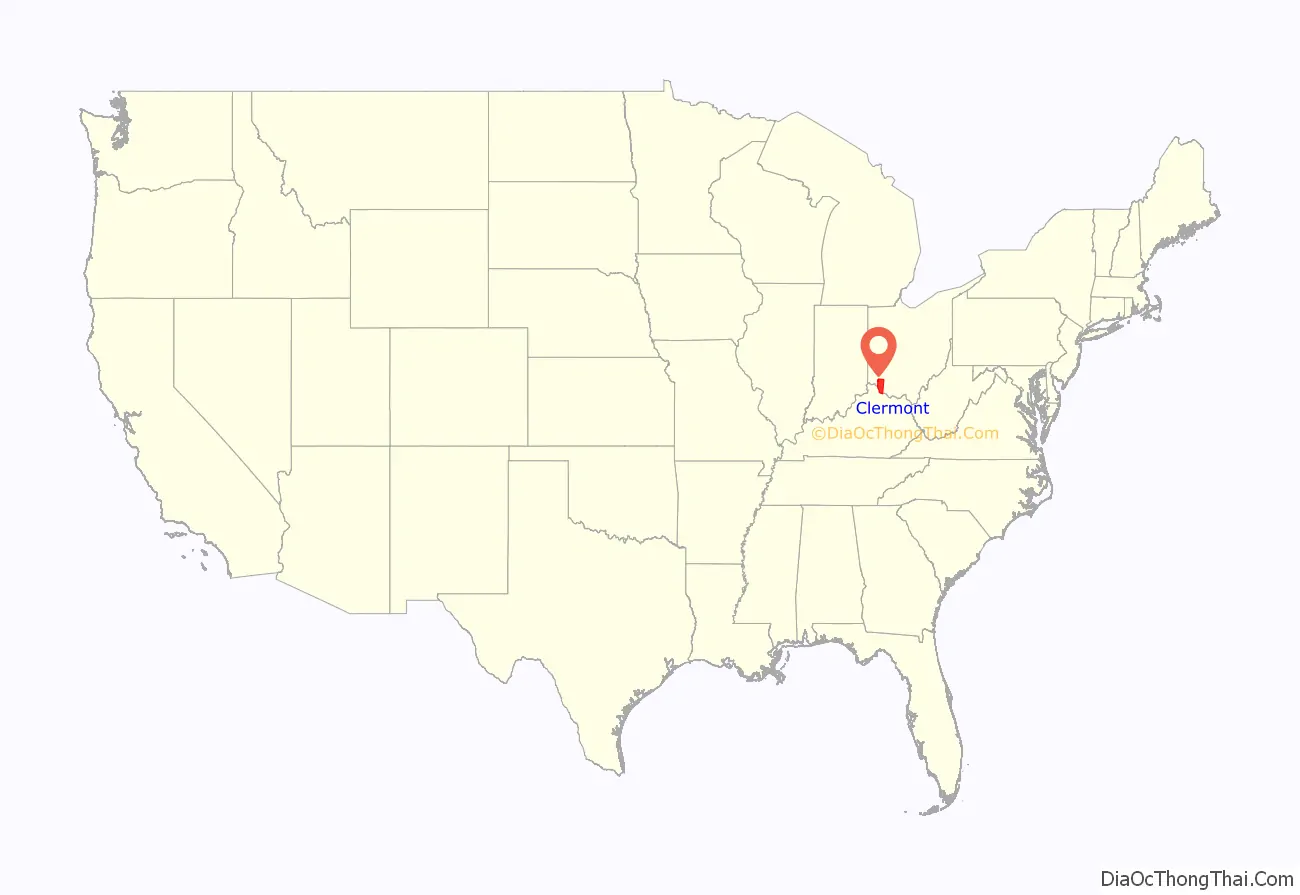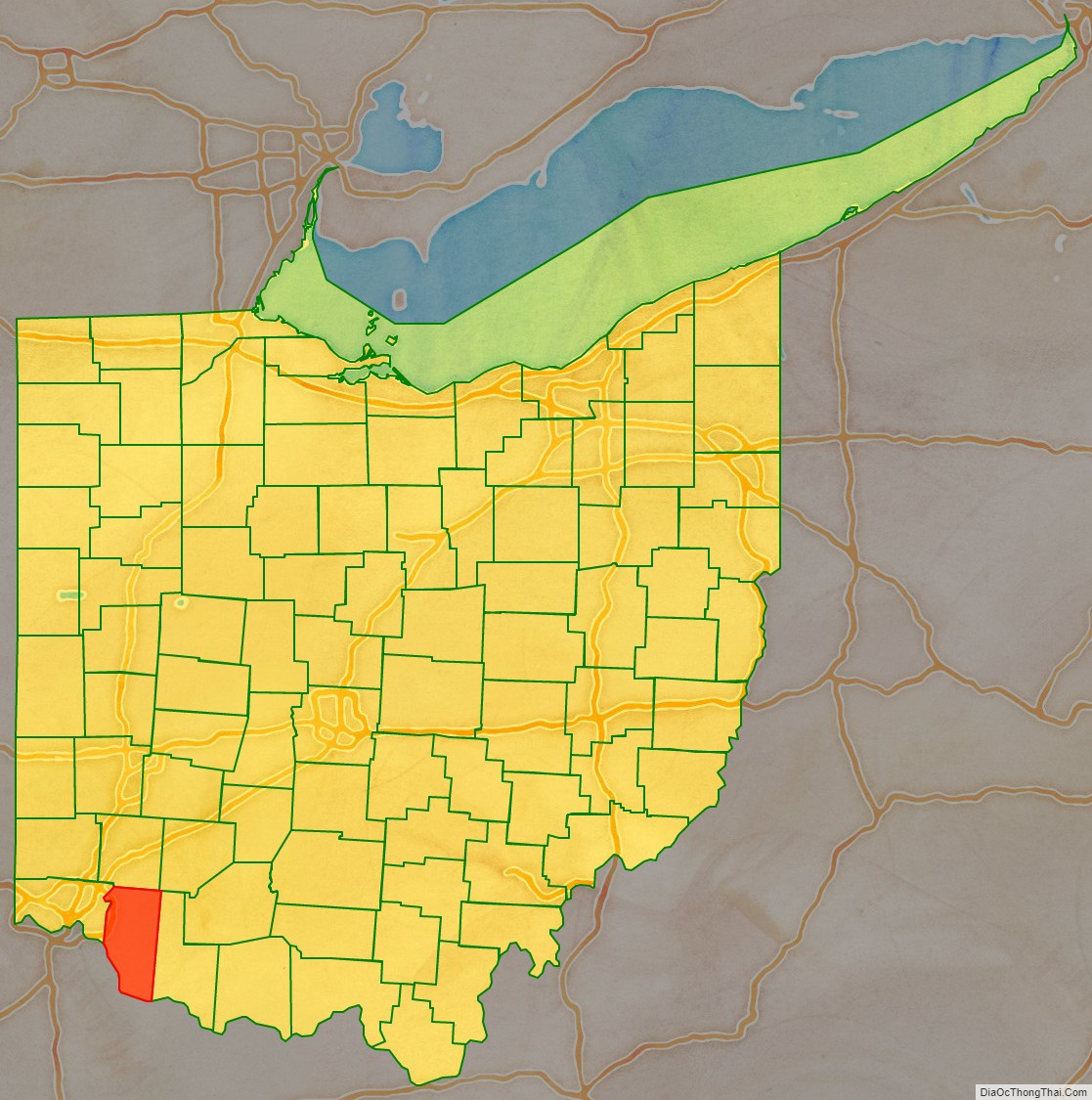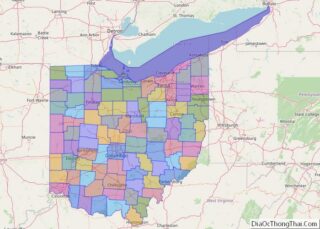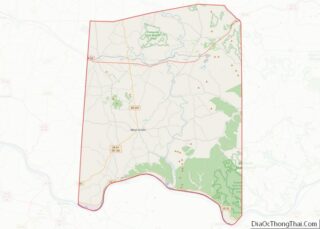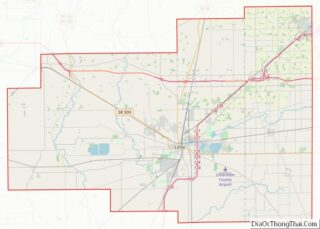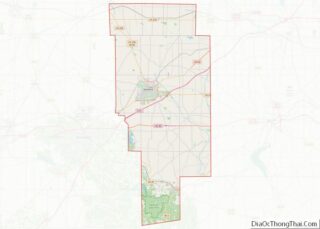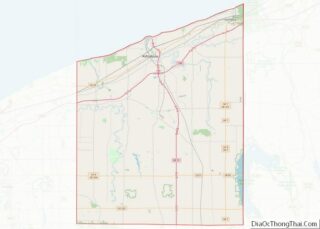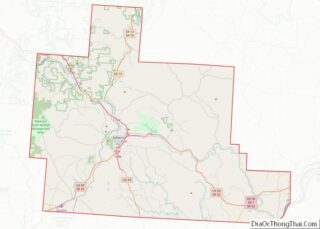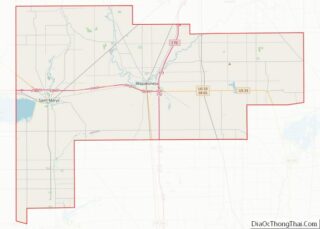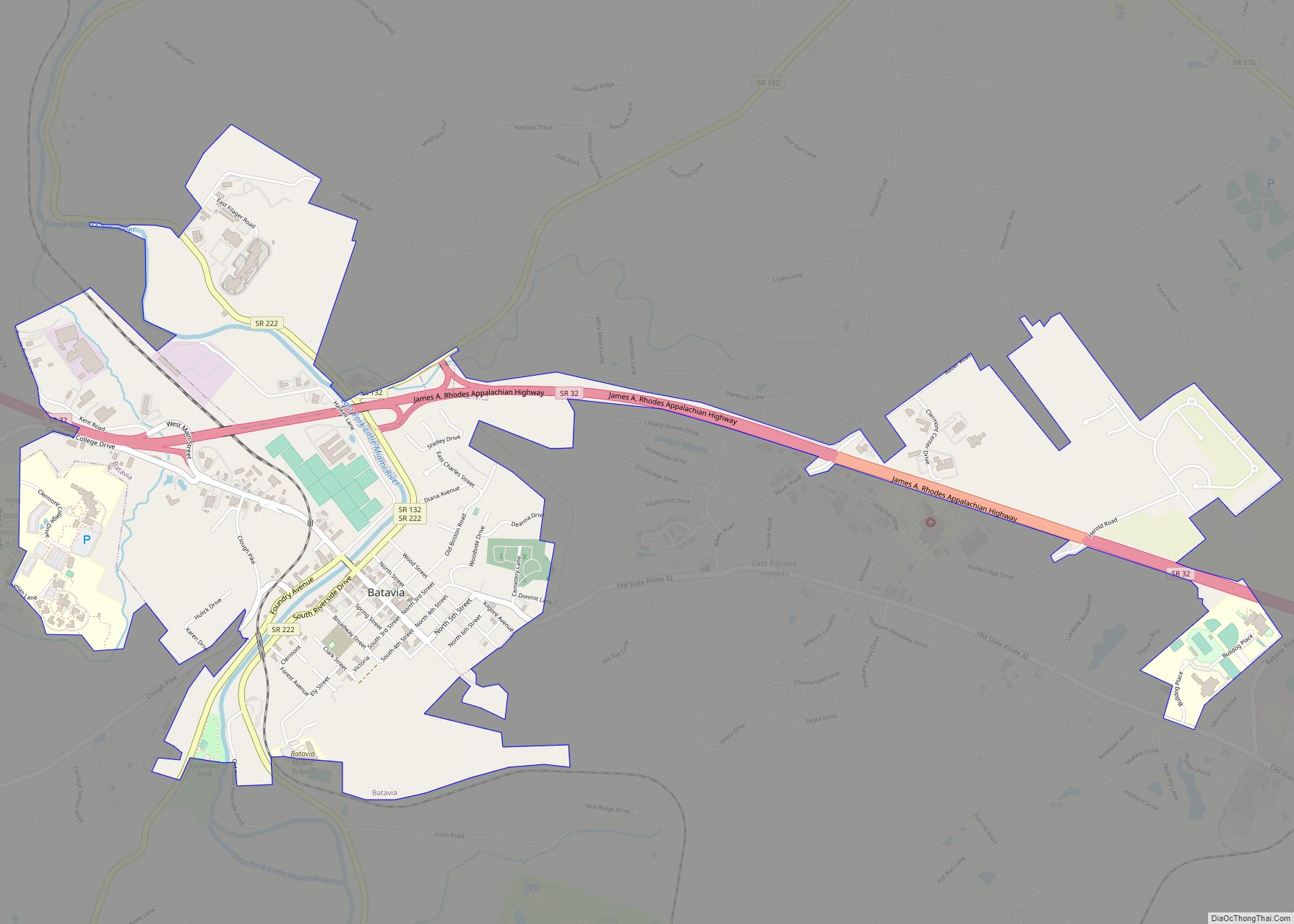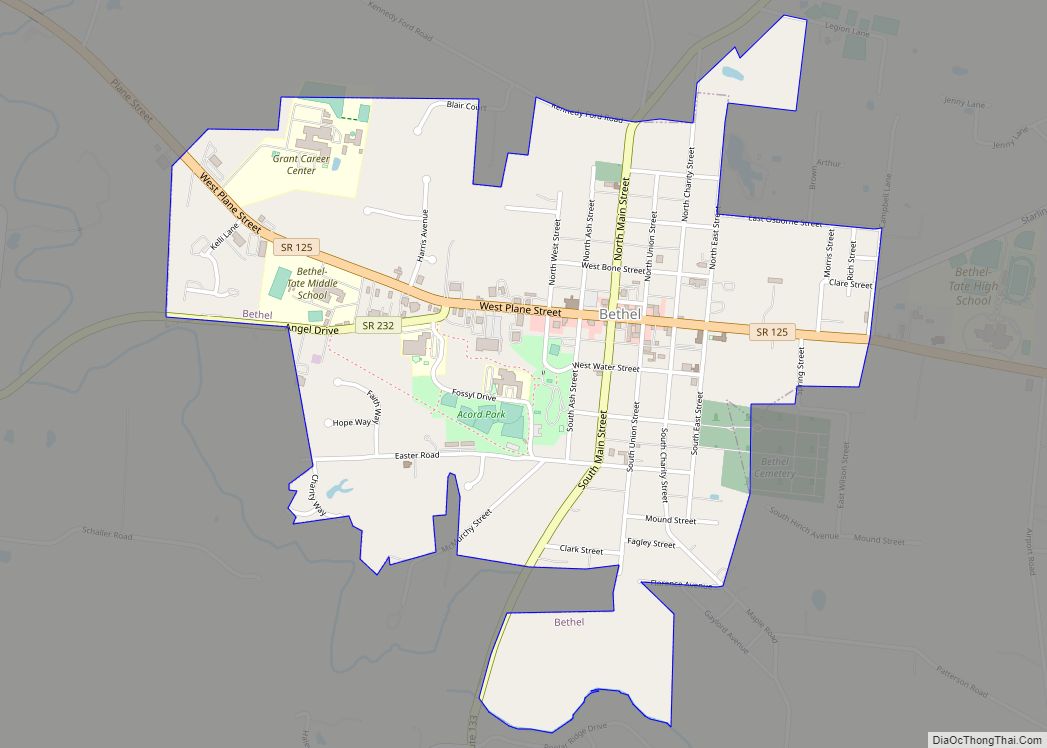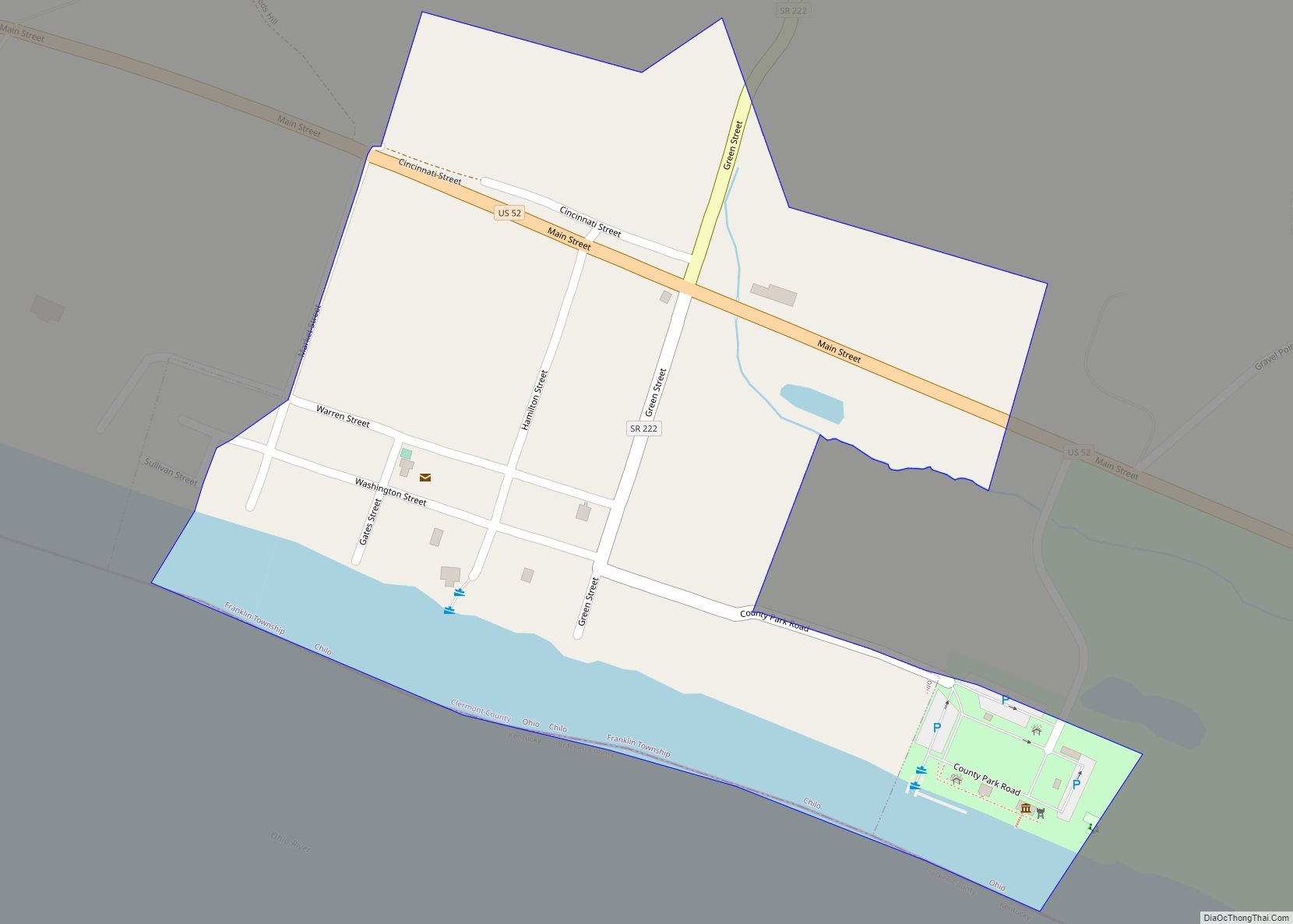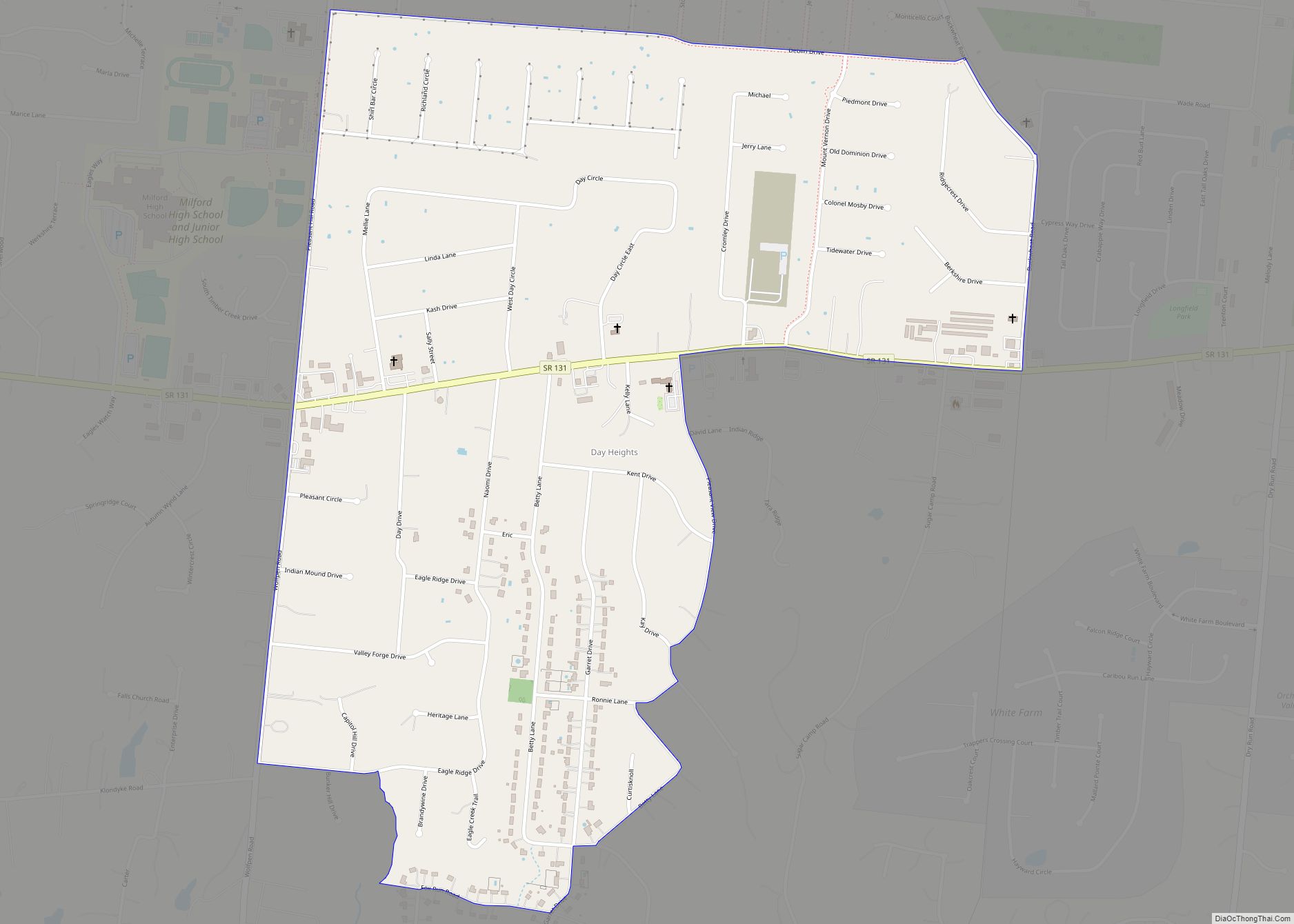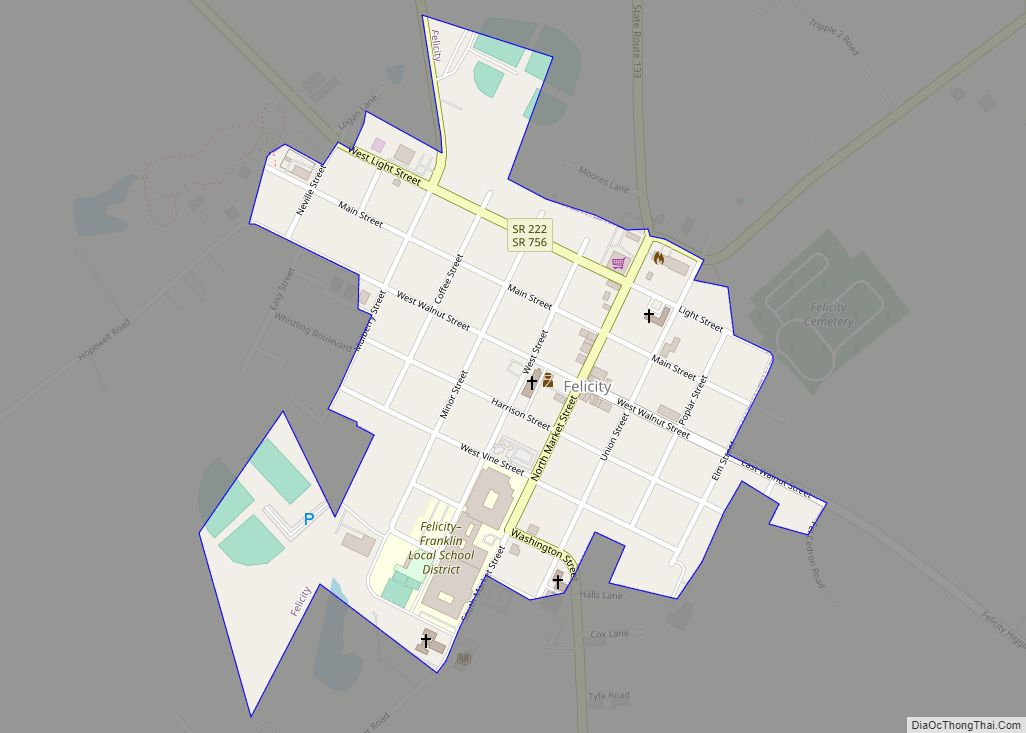Clermont County, popularly called Clermont (/ˈklɪrmɒnt/ KLEER-mont), is a county in the U.S. state of Ohio. As of the 2020 census, the population was 208,601. Ordinanced in 1800 as part of the Virginia Military District, Clermont is Ohio’s eighth oldest county, the furthest county west in Appalachian Ohio, and the eleventh oldest county of the former Northwest Territory. Clermont County is part of the Cincinnati, OH-KY-IN Metropolitan Statistical Area. The county is named from the French “clear hills or mountain.” Its county seat is Batavia, while its largest city is Milford.
| Name: | Clermont County |
|---|---|
| FIPS code: | 39-025 |
| State: | Ohio |
| Founded: | December 6, 1800 |
| Seat: | Batavia |
| Largest city: | Milford |
| Total Area: | 460 sq mi (1,200 km²) |
| Land Area: | 452 sq mi (1,170 km²) |
| Total Population: | 208,601 |
| Population Density: | 450/sq mi (180/km²) |
| Time zone: | UTC−5 (Eastern) |
| Summer Time Zone (DST): | UTC−4 (EDT) |
| Website: | www.clermontcountyohio.gov |
Clermont County location map. Where is Clermont County?
History
Clermont’s name is borrowed from a prefecture in France notable as the home of Celtic leader Vercingetorix who led the unified Gallic resistance to Roman invasion. Clermont connotes “clear mountain,” which describes the hills when viewed through the thick Ohio River fog. During the Age of Discovery, the French became the first recorded Europeans to see this land from the Ohio River, though Clermont’s peoplification dates to the Paleoindian, Adena, Hopewell, and Fort Ancient cultures. The Gatch Site and other sites provide glimpses into what life was like for these people. The Shawnee, Miami, Lenape, Mingo, Odawa, Cherokee, and Wyandot each have or had a presence in Clermont.
At its ordinance in 1800 by the Commonwealth of Virginia to reward Virginian military veterans with land bounties, Clermont encompassed twenty-three current Ohio counties and over 4.2 million acres of dense old-growth forest. The first deed was issued on February 20, 1796. George Washington owned three parcels of land in Clermont County, whose first capital was Williamsburg, founded by William Lytle, and like Milford, was founded in 1796. A stone dairy house, constructed in 1800, is thought to be the oldest standing building in Clermont. The edifice is located beside Harmony Hill on South Third Street in Williamsburg. Harmony Hill, one of the area’s first farms, was built by William Lytle. The last American Indian village was located two miles south of Marathon in Jackson Township, along the mouth of Grassy Run on the East Fork of the Little Miami River. The site saw the largest frontier battle in Clermont, the Battle of Grassy Run, during which pioneer Simon Kenton clashed with chief Tecumseh on April 10, 1792. The Wyandot lived at this site until 1811. The Bullskin Trail, once a major American Indian trail, runs north and south through Clermont along Ohio Route 133, and was used by frontiersmen Kenton and Daniel Boone on hunting and warfare expeditions. In 1823, New Richmond became the seat, and in 1824, the seat moved to Batavia, the county’s current seat. Clermont’s Moscow became the exiled home of French royalty during the early 1800s, including future King of France Louis-Philippe in 1815 and the Marquis de Lafayette in 1825. Point Pleasant was birthplace and boyhood home of military hero, Union general, and President Ulysses S. Grant, born on April 27, 1822.
During the 1800s, antislavery sentiment remained strong. Bethel was the residence of Democratic United States Senator Thomas Morris who also served three terms in the Ohio House of Representatives, as Ohio Supreme Court Justice, and four terms in the Ohio Senate. His U.S. Senate career lasted from 1833 to 1839, and in 1844, Morris was the vice presidential candidate for a third party with the goal of abolishing slavery—approximately sixteen years before the first antislavery Republican president. Also in 1844, Clermont became the site of Utopia, an egalitarian haven of Puritans who espoused the doctrines of François Marie Charles Fourier. In 1847, future Ohio Governor John M. Pattison was born near Owensville. Grant became commander-in-chief of the U.S. Army in the Civil War, during which John Hunt Morgan and his Confederate raiders invaded Clermont in 1863. Grant was elected the eighteenth president in 1868.
Thomas Morris, U.S. Senator
John Pattison, Governor
Hugh Nichols, Lt. Governor and Chief Justice
Clermont’s last-standing covered bridge was built in 1878 on Stonelick Williams Corner Road, near US Route 50; it was renovated in 2014. The Grant birthplace, originally a one-room cabin, continues to welcome visitors and in 1890 was removed from its original location, travelling by boat to be viewed by citizens along various waterways. It was also taken to the 1893 Chicago World’s Fair before returning to Clermont.
An unverified urban legend speculates that, around year 1900, clergy from numerous congregations gathered to create a list of ten places on Earth where the Garden of Eden could have been located. Among the locations was Clermont County, Ohio, listed for its many fruiting trees and the early influence of American Indians who built earthen mounds in the form of serpents. Subsequently, prominent men from Hamilton County dedicated Eden Park to honor the distinction.
Pattison became the first Clermont Countian elected Governor of Ohio in 1905, Ohio’s first Democratic governor of the twentieth century. Pattison lived in Milford, and at a time before the influence of Columbus, governed from his home called the Promont, which was used as the official governor’s residence. The mansion, completed in 1865, today is a museum that houses a library and other historical memorabilia. It is located at 906 Main Street, Milford. Democrat Hugh Llewellyn Nichols of Batavia served as 32nd Lieutenant Governor of Ohio and became the first Chief Justice of the Ohio Supreme Court in 1914. Orpha Gatch of Milford, the first woman elected to its school board, locally sponsored the county LWV, and is the namesake for the club’s award given annually at its suffragist brunch honoring the recognized volunteerism and leadership qualities. Clermont’s progressivism created a climate of political independence. Despite recent Republican prevalence in its offices, heavy nonpartisan and union influences exist. Clermont’s growing population as well as environmentalism have contributed to this climate.
Clermont County Road Map
Geography
According to the United States Census Bureau, the county has a total area of 460 square miles (1,200 km), of which 452 square miles (1,170 km) is land and 7.7 square miles (20 km) (1.7%) is water.
Adjacent counties
- Brown County (east)
- Bracken County, Kentucky (south)
- Pendleton County, Kentucky (southwest)
- Campbell County, Kentucky (southwest)
- Hamilton County (west)
- Warren County (north)
- Clinton County (north east)
